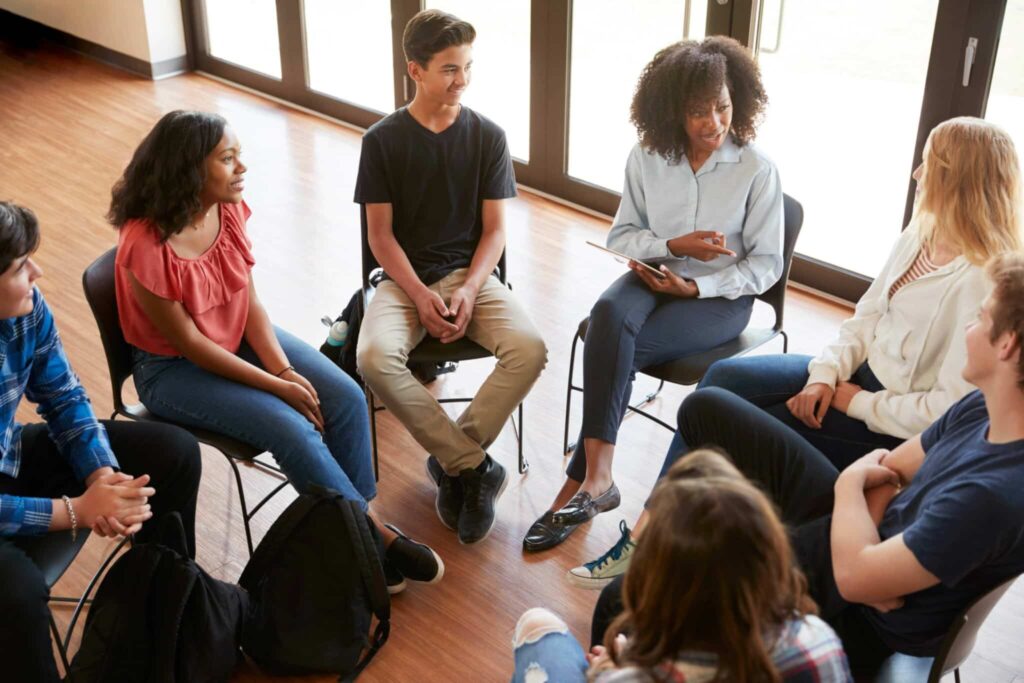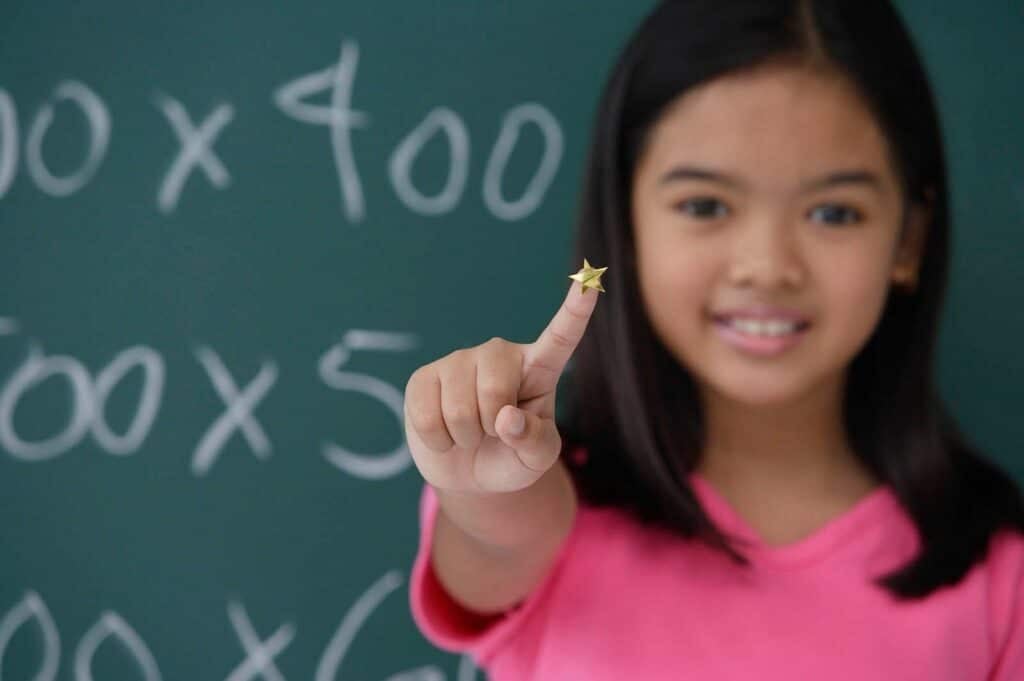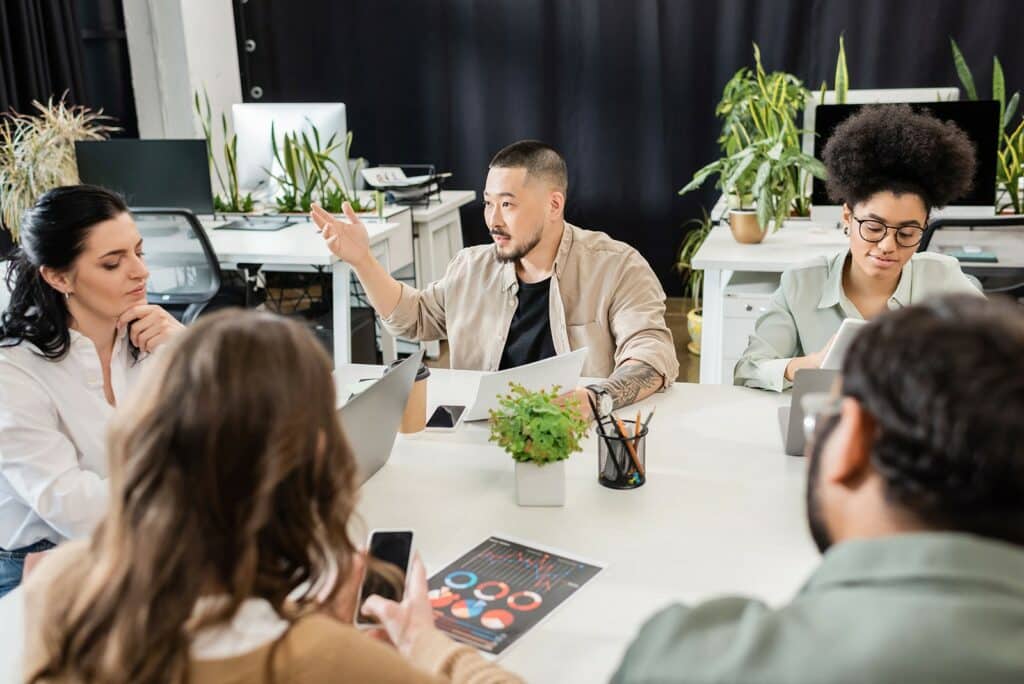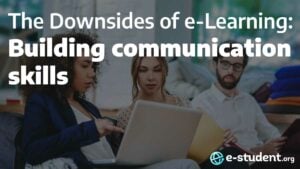- Learning theories help explain the different ways people acquire, retain, and remember knowledge.
- While there are different theories on how we learn, many of them have similarities and overlapping ideas.
- There is no right or wrong learning theory. The importance of knowing how people learn is to create better learning environments that promote a love for learning and a yearning for excellence among students.
Learning is often defined as a lasting change in behavior or knowledge that is a result of experience. It is a complex, multi-step process that allows us to acquire knowledge and skills. And it is a universal experience. All of us engage in this process, but it can happen in different ways. Moreover, learning can be a personal experience.
Different variables can influence the learning process, such as biological, social, emotional, cognitive, and cultural factors. This is why it is important for educators and students to understand the different ways people acquire and retain knowledge. Knowing this can help facilitate deeper, more engaging learning experiences, which can lead to better learning.
In this article, we’ll explain the different learning theories and how they differ from each other. We’ll also examine how we can use these to choose techniques, strategies, and tools that can help us create better learning environments that promote learning in the online classroom. If you want to learn more about any of the theories, including how to apply them in the classroom, click on the link at the end of each section.
Table of Contents

Transformative Learning Theory
The Transformative Learning Theory was introduced by Jack Mezirow in 1978. Using the results of a study he conducted on adult learning, he theorized that learning starts when a person’s worldview is challenged when an experience doesn’t align with his current belief or assumption about the world.
This event causes the individual to reflect on the experience. Does what he believes in still hold true? Examining his past ideas and understanding (a.k.a. critical reflection) helps him obtain a new perspective, which, in turn, allows him to acquire new knowledge. When that new knowledge is expressed through action – a change in behavior, then the whole process can be considered a transformative learning experience.
Now, according to Mezirow, transformative learning is a journey – a series of phases that start with a disorienting dilemma and end with reintegration, where we fully embrace the new concept and apply it in our lives. Let’s use an example to explain this concept further:
- A student who always believed that online classes were boring is unexpectedly required to study at home because of the pandemic. This is the disorienting dilemma.
- He is resistant to the idea, but after a few classes, he realizes that it can be fun.
- He also comes to the realization that studying at home does have benefits.
- He starts to question why he was so resistant to it before. He shares his experience with his classmates and learns that they also had the same thoughts.
- He starts to look at how he can make online learning more effective and engaging. He even shares his discoveries with his classmates.
- He starts to create a plan, even downloading apps to help him learn more effectively online.
- He now believes that online learning can be even better than going to class in person. He may even start to look for programs that offer online classes or request his school to start an eLearning program.
As educators, we can use the core principles of the Transformative Learning Theory to design more effective learning experiences. Our duty is to provide students with opportunities where their existing beliefs and assumptions are challenged. We also need to ensure that they have a safe space where they can share their thoughts and experiences. The teacher’s role is to be a facilitator and guide, helping the students identify and discuss the assumptions and biases that influence their worldview.
For students, the Transformative Learning Theory teaches us to always keep an open mind. We need to learn how to view things from different perspectives and reflect on them, asking probing questions and analyzing our previous understanding. With transformative learning, we can practice freedom of thought and even obtain personal growth.

Connectivist Learning Theory
Compared to other learning theories, the Connectivist Learning Theory is a relatively new concept. It was first introduced in 2005 by George Siemens and Stephen Downes in response to the modern learning landscape. According to this theory, “knowledge is distributed across a network of connections, and therefore that learning consists of the ability to construct and traverse those networks.”
What does that mean? In layman’s terms, learning occurs through the sharing of ideas, opinions, and resources. Simply put, it is our interactions with others that promote learning. Thanks to technology, we can easily connect with various sources of ideas and knowledge – people, organizations, and communities. According to the Connectivism Learning Theory, the more connections a person has, the easier it is for him to acquire knowledge.
This theory is already in practice in classrooms today, though we might not be aware of it. The teacher and all the students can each be considered a source. After all, we all have knowledge that we can share. In class, the students can connect with the teacher and their classmates to exchange information, forming a network of knowledge within that group. Everyone is an active participant in their own learning process.
Outside of the classroom, each person is also connected to other sources – larger networks of knowledge such as online communities, blogs, and forums. Because technology has allowed us to stay connected to so many varied sources of knowledge, we can pick and choose what we learn, how we learn, and where we learn.
How do we put the Connectivism Learning Theory into practice? Unlike traditional teaching techniques, connectivism emphasizes student-centered learning. Educators act as facilitators, leveraging digital tools and online resources to create opportunities for students to expand their learning networks. Some examples include using social media for brainstorming and discussions among students, apps like Khan Academy that gamify learning, and online simulations to help students put their learning into practice.
Students, on the other hand, can be more proactive in their learning. They can create more learning opportunities that are aligned with their interest and preferences by leveraging technology. Connectivism teaches us that while learning is personal, it is not an individualistic activity. It is through the sharing of knowledge with others that we can truly thrive.

Cognitive Learning Theory
As we’ve discussed above, the Transformative Learning Theory is focused on adult learning. The Connectivism Learning Theory, on the other hand, states that learning occurs outside of ourselves through our connections and interactions with others. In comparison, the Cognitive Learning Theory focuses on the internal – how our brain processes information, stores it, and retrieves it. Moreover, this theory states that knowledge-building is a passive activity.
The Cognitive Learning Theory was introduced by Jean Piaget in 1936. He believed that it wasn’t enough for us to measure learning according to a person’s behavior. It was also important for us to understand the internal mental processes involved in the acquisition of knowledge.
According to the Cognitive Learning Theory, learning occurs when we process information, understand how a concept can be used, and organize the ideas into categories or schema. We then store the information in our memory, connecting it with our existing knowledge. Later on, we can retrieve this newly constructed knowledge and apply it in a real-world setting.
There are different ways to apply the Cognitive Learning Theory in the classroom. These include journaling for self-reflection, creating visual diagrams to help link concepts together, and group discussions and problem-solving involving real-world examples.

Behavioral Learning Theory
Unlike the Cognitive Learning Theory, which focuses on the internal processes involved in learning, the Behavioral Learning Theory only focuses on the external – on behavior. According to this theory, all human behavior is learned, and our behaviors are simply a reaction to external stimuli. In addition, learning behaviors can be accomplished through association and reinforcement.
One great example of learning through association is Pavlov’s experiment. He was able to teach dogs to associate the ringing of a bell with the arrival of food. When the dogs smell the food, it automatically triggers their hunger, which causes them to salivate. Because the dogs learned to associate the sound of the bell with food, just hearing the ringing bell can cause them to feel hunger and salivate – even if there is no actual food.
As for reinforcement, we’re all familiar with the concept of reward and punishment. We’re more likely to learn a behavior if we get something good out of it. We’re less likely to repeat a behavior if we get punished.
Compared to other learning theories, behaviorism sees the learner as a passive participant. It does not consider the role of existing knowledge, prior experience, and emotion in learning. Instead, behaviorists consider learners to be blank slates waiting to absorb the knowledge given by the teacher.
There are several ways we can apply behaviorism in the classroom. Educators can provide regular reviews and guided practice. They can employ game-based learning activities and implement a reward system to increase motivation and engagement.

Constructivist Learning Theory
The core principle of the Constructivist Learning Theory is that learning involves actively constructing knowledge based on what we already know and what we have experienced. That’s not all. Learning is also influenced by our environment, social interactions, beliefs, culture, and even language. Because of this, learning is a personal process. No two people will have the same constructed knowledge because all of us have different interpretations of our experiences.
In Constructivism, the teacher serves as a coach and a facilitator, providing students with opportunities to explore topics and ask questions, reflect on information, and practice critical thinking skills. Some examples of teaching methods that employ Constructivist Learning Theory include problem-based learning, inquiry-based learning, and cooperative learning.

Humanistic Learning Theory
According to the Humanistic Learning Theory, humans are inherently good and will always choose the best for themselves and for others. We are born with the motivation to be the best version of ourselves. Moreover, we need to feel positive in order to be open to learning and achieve the best results.
What does all of these mean? Like many other learning theories, the focus of the Humanism Learning Theory is on the learner. The learner is autonomous and able to choose what and how he or she wants to learn. In addition, we need to be motivated to learn. It is the teacher’s role to guide and encourage the learner in pursuing his interests.
What makes this learning theory different from all the others? First, the Humanism Learning Theory places importance on student-led evaluation. Instead of a grading system, students are encouraged to set their own standards and evaluate their progress based on that.
Second, this theory emphasizes on the importance of the “whole being.” Learning is not just about intellect. Feelings, self-esteem, social skills, and practical skills are just as important as the acquisition of knowledge. For example, a child who is anxious and worried would have difficulty focusing on the lesson, hindering the learning process. The teacher should help the child overcome his feelings of anxiety and provide him with a learning environment where he feels safe and comfortable.
Third, punishments and negative feedback are not appropriate methods for correcting a behavior. Because students are all fundamentally good, educators need to look at the underlying reasons why a student is misbehaving. Which of his needs are not currently being fulfilled?
The Humanism Learning Theory uses a student-centered approach, which means that the teacher serves as a facilitator and model in the classroom. He or she is responsible for helping students create goals, providing different learning opportunities to engage their interests, and giving them the flexibility to choose their modes of participation.
Like Constructivism, the Humanism Learning Theory promotes independence and a love for learning. But its scope goes far beyond – cultivating a person’s motivation for self-growth.

Social Learning Theory
The main idea of the Social Learning Theory is that we learn by observing and imitating the behavior of others. This learning is not limited to what we observe face-to-face. We also learn from what we see on media, from both real and fictional people. We can also learn from the verbal instruction of others or through reading.
Another important point of the Social Learning Theory is that we can learn from direct and indirect experience. What does this mean? We don’t need to learn something by directly experiencing it. We don’t even have to imitate a behavior in order to learn it. In addition, seeing the consequences of another person’s action can influence whether we imitate the behavior or not.
Let’s look at a few examples to explain this theory better:
- A little girl learns how to perform a dance by watching a TikTok video.
- An employee arrives at work on time because he saw a colleague get a deduction on his salary for being late.
- A preschooler participates in a game because he saw his classmate receiving a reward for joining the activity.
The Social Learning Theory is like the Behavioral Learning Theory combined with the Cognitive Learning Theory. This is because it defines learning as a cognitive-behavioral process. It makes use of reinforcement as well as cognitive skills such as attention, observation, and retention.
It also has certain similarities with Constructivism and Connectivism, where a person learns from his social interactions, especially when he interacts with others who are more proficient than him.
The similarities don’t end there. Like many other learning theories, employing game-based learning activities and simulations is one of the ways to apply the Social Learning Theory in the classroom. Collaborative activities such as peer coaching and group projects can also provide students with opportunities to learn from each other.
The most important thing for educators to keep in mind is that our students are a product of their environment. Everything they experience will have an impact on who they are today. The lesson that the Social Learning Theory imparts is for us to be positive role models that can help shape them into contributing members of society.

Experiential Learning Theory
The Experiential Learning Theory is quite simple. It states that we learn by doing and by reflecting on the experience. Learning, according to this theory, is an active process, a cycle that has four stages. First, the learner encounters an experience. He is actively engaged in it, asking questions, experimenting, investigating, etc. Second, he thinks about the information he gained from the experience. Third, he connects this new idea to past knowledge or modifies his past knowledge to fit the new understanding. Fourth, he tries out what he has learned.
While there are stages in learning, everyone has his own preference for the way they learn. Our preferences are influenced by our genetics, environment, and life experiences. What does this mean? Simply put, you can start anywhere in the cycle based on what suits you best. For example, you may prefer to learn about riding a bike by watching others riding their bikes and reflecting on your observations. Or you may prefer to start with an abstract concept, so you decide to read about it first. Others may be more inclined to just try riding the bike straight away.
Similar to many learning theories, the Experiential Learning Theory has a student-focused approach. Educators serve as facilitators and guides, providing students with opportunities to practice their skills. They should also make sure that students have periods for reflection before and after the experience.
Integrating experiential learning in the classroom also uses many of the same activities mentioned earlier, such as interactive games and online journaling for self-reflection. Other activities that promote experiential learning include virtual tours, science experiments, and role-playing.
Conclusion
No two people learn in the exact same way. Everyone has their own way of acquiring and understanding knowledge. For educators, understanding the different ways people learn is a critical step toward creating an optimal learning environment that addresses the needs and desires of the students.
Using these learning theories as lenses to look at their work can help teachers find the right approach for effective instruction and classroom management.



